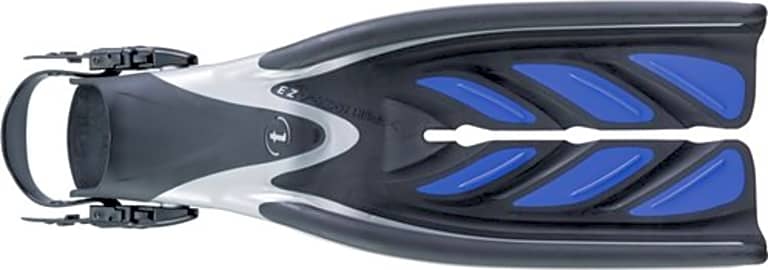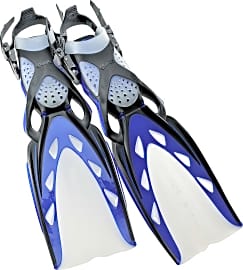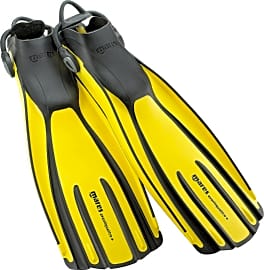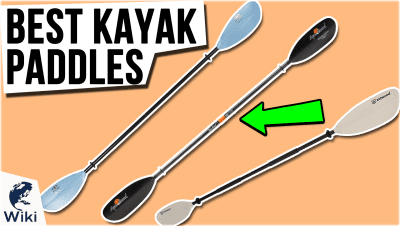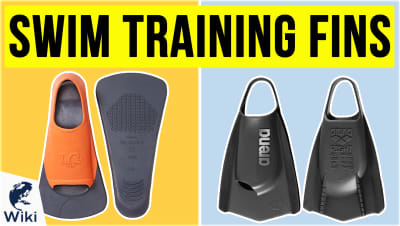The 10 Best Dive Fins

This wiki has been updated 40 times since it was first published in April of 2015. Sure, you can rent gear during your next scuba trip, but having your own dive flippers can not only save you money in the long run, but also greatly enhance your underwater experience, since you'll be used to how they perform. Whether you prefer a vented fin with a lot of flexibility, or a stiff, ridged blade, you can find an option that fits your needs on right here. When users buy our independently chosen editorial picks, we may earn commissions to help fund the Wiki.
Editor's Notes
February 28, 2020:
Previously, we had included both dive and snorkeling fins on this list, but we have now decided to make two separate pages for these categories so there is no confusion for our readers. The result was a complete overall that allowed us to include a bunch of high-quality flippers that we couldn't previously recommend. One of these new additions is the Mares X-Stream Open Heel, which are designed with a focus on minimizing water disturbance. This makes them a great choice for anyone who spends a lot of time up close and personal with sensitive marine life or near heavily-silted bottoms. Somehow, Mares has accomplished this without losing much in the way of efficiency, so you can still move fast with them when you need to. The OMS Slipstream are another good choice for limiting your marine life disruption. They have a short blade with a very stiff form that means you won't lose out on thrusting power, however this can make them fatiguing for some.
The TUSA SF-0104 Hyflex Switch are also a new addition and are ideal for travelers. They boast a multi-piece design that you can disassemble for packing, yet isn't noticeable when worn, so they feel just like any other high-quality pair.
When it comes to bang for the buck, the Cressi Frog Plus is a no brainer. Though they have a middling price, they are capable of producing a lot of thrust and have a patented three-material, injection molded construction that does a good job of balancing performance with comfort.
Though we added a lot of new models, there are some, like the Scubapro Seawing Nova, which retained a place on our list, and in the case of this particular option, even moved up a few spots. They are a smart choice for anyone who deals with ankle or knee issues, thanks to their articulating joints that minimize strain without hindering thrust much. They also allow you to vary your kick style as needed to fit whatever underwater situation you are dealing with. The Tusa X-Pert Zoom Z3 is another pair that retained a spot on the list and, thanks to their split-fin design, allow for a wide range of kick styles without putting too much strain on the knees.
Special Honors
Cressi Thor EBS The Cressi Thor feature polypropylene blades that promote a fast transmission of applied energy, which, in layman's terms, means they offer a lot of thrust from each kick so you can move through the water quickly without getting too fatigued. This is further enhanced by a blade inclination that provides a natural foot position while fluttering. cressi.com
How Do I Choose a Proper Pair of Dive Fins For ME?
But you'll probably also want to read some professional reviews - and some customer reviews - before you make your final choice.
The most important aspect of any pair of dive fins is comfort. This may comes as a surprise given so much priority is focused on a dive fin's performance. And yet the reality is that if a pair of dive fins doesn't fit comfortably, that pair of fins is of little value, long-term. One-size-fits-all dive fins tend to cause blisters, or pinch the heel, or cram the toes, or, worse yet, slip right off. The point being that approximate sizing is important, and any dive fins that are fastened with a strap should include some extra padding along the back.
Once you've squared away comfort, the next area you'll want to focus on is aqua-dynamics. Ideally, you'll want a pair of dive fins to weigh somewhere between 6-10 lbs. Top dive fins are designed with built-in rivets, or channels, along the top half of the flipper. These rivets work in conjunction with side rails to propel a diver forward. Kicking with a well-built pair of dive fins creates the same type of thrust as pulling inward with a pair of oars. An oar's blades are actually shaped like a pair of dive fins. Certain oars even feature rivets for redirecting water.
As a precaution, you'll want to get a sense of how durable a pair of dive fins might be. This is a tricky business, in that the majority of dive fins have been designed by using a similar combination of rubber and plastic. Seeing phrases like "multi-layered," "reinforced," and "structural integrity" in a dive fin's description is a promising start. But you'll probably also want to read some professional reviews - and some customer reviews - before you make your final choice.
How To Swim Efficiently With a Pair of Dive Fins
The goal of dive fins is to allow a swimmer to move quicker, and more efficiently, while underwater. This is especially important for ocean divers who are using a great deal of energy to reach - and return from - considerable depths within an abbreviated period of time.
The most basic dive-fin motion is what is known as a flutter-kick.
Swimming with dive fins is easy, and it will lighten the burden on your body. The most basic dive-fin motion is what is known as a flutter-kick. Flutter-kicking requires the same one-two motion that a person uses whenever kicking in a swimming pool, with the difference being that both arms should remain static, and positioned at your sides.
Flutter-kicking involves constant movement, and it is for this reason that a lot of divers prefer to frog-kick instead. Frog-kicking requires a swimmer to begin with both legs resting straight, and parallel. The swimmer then brings both legs up toward the body before cycling them outward and around (this is the same lower-body motion that is used during a breaststroke).
The key to an effective frog-kick is making sure that both heels face each other whenever you bring them back into what is known as the resting position. Doing so will maximize the amount of propulsion, thereby allowing you more time to relax in between kicks. In addition, you should hold both hands clasped in front of your stomach during a frog-kick. Using your hands to skim water will actually impede some of your progress.
It is recommended that you practice both of the above kicks before attempting any type of deep-sea excursion. You can hone your technique by completing 2-minute drills in dive fins while swimming laps, or holding onto the ledge of a pool.
A Brief History of The 'Swim Fin' (By Way of Its Inventor)
Flexible swim fins were invented by a Lieutenant Commander in the French Navy named Louis de Corlieu. De Corlieu spent roughly two decades refining his propulsion device before he registered for a patent in early April of 1933.
Churchill helped de Corlieu market his new invention to the American Navy, which used the fins for a number of purposes.
De Corlieu was far from the first person to tinker with the idea of using foot extensions to push through open water. Some of the greatest innovators of the 19th Century - including Benjamin Franklin - had experimented with the idea before. What separated de Corlieu was his insistence that a pair of flippers needed to be constructed out of rubber or plastic. Ben Franklin's flippers had been constructed out of wood, which is incapable of channeling water in a weightless, fluid motion.
In 1940, de Corlieu coined the term "swim fin" when licensing his propulsion device to an American sailor named Owen Churchill. Churchill helped de Corlieu market his new invention to the American Navy, which used the fins for a number of purposes. Perhaps most notably, US frogmen wore de Corlieu's flippers while disabling underwater mines just off of Normandy Beach. This became a precursor to what we now know as the D-Day Invasion.
Throughout the 1950s, major manufacturers (including Dunlop) began cutting in on de Corlieu's profits. These manufacturers developed their own lines of highly-specialized fins, including diving fins, which were built longer for gaining additional propulsion with each thrust. De Corlieu stepped away from the business entirely during the early 1960s. He died in Paris in 1967. He was inducted posthumously into the Scuba Diving Hall of Fame.



